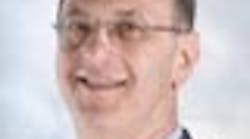My aggravation with the dismissive attitude shown by too many chemical engineering professors toward real-world application of technology isn’t a secret. For instance, just last month in my editorial “Young Engineers Need Our Help,” I complained that professors sneer at the idea of a new chemical engineering graduate getting some experience in industry before pursuing an academic career. In addition, about a year ago in “Funders Fumble Fractionation,” I decried the lack of practical research on distillation in chemical engineering departments, despite that unit operation’s importance to industry. Attention to real-world issues would sully the teaching of first principles and undermine the purity of fundamental research, too many academics insist.
So, when engineering school faculty do step up to solve a serious real-world problem, I feel it’s important to call attention to their efforts.
[pullquote]
In early January, New York’s Governor Andrew Cuomo announced that a team of engineering school experts working pro bono had come up with a way to repair a major subway tunnel without shutting it down completely. Superstorm Sandy in 2012 severely damaged the cabling and concrete within the Canarsie tunnel. It runs under the East River between Manhattan and Brooklyn and provides service on the L line for about 250,000 riders daily.
Up until then, the plan announced several years ago by the New York City Transit Authority, which operates the subway system, was to close the tunnel completely in April for about 15 months while it was repaired — forcing riders to find other ways to travel. Unfortunately, no obvious or easy alternatives exist, leading the expected shutdown to be called the “L-pocalypse.”
Hoping to avert that massive disruption, Cuomo enlisted the help of two top engineering schools in the state — Columbia and Cornell. (Columbia has been in New York City since 1754 while Ithaca-based Cornell relatively recently opened a graduate school of engineering and applied science in the city after winning a competition, see: “Big Apple Chooses Cornell”.) In December, Cuomo; Mary Boyce, dean of Columbia’s engineering school; Lance Collins, dean of Cornell’s engineering school; and professors of civil and electrical engineering from the schools toured the damaged tunnel.
[callToAction]
The team of engineers from the schools came up with a different way to rehabilitate the tunnel that avoids the previously planned “rip and replace” of existing electrical and communications cables. Instead, their plan involves suspending new cables from the tunnel walls and wrapping them in fiber-glass-reinforced polymer, the first application of such cable racking technology in the U.S. and for a tunnel; it already is proven on bridges. This would allow continuing but somewhat limited use of the tunnel, with the work done at night and during weekends one track at a time.
As a New Yorker who has been known to take the L line, I wholeheartedly hope the new approach lives up to expectations.
Some might argue that the nature of civil and electrical engineering fosters a greater appreciation of real-world issues and the need to address them by professors in those disciplines. I don’t buy that. The Columbia and Cornell faculty came up with a vision for the tunnel. In contrast, many chemical engineering professors have tunnel vision.



